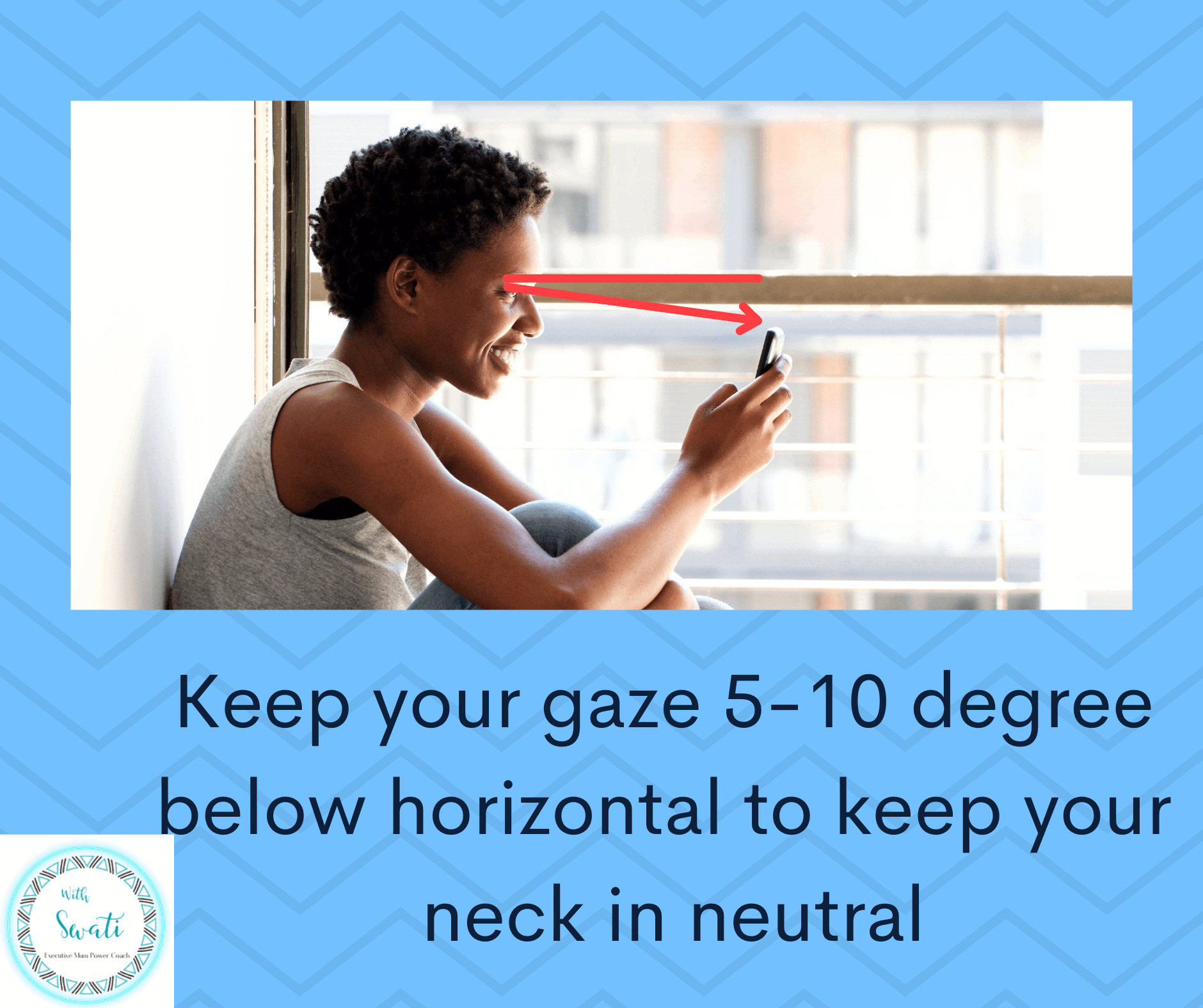
In the demanding world of executive mums, where balancing work commitments with family responsibilities often leads to prolonged periods of sitting or standing, neck pain can become a common companion. Despite investing in a standing desk, you may still find yourself struggling with neck pain. In this blog we will discuss some simple yet effective solutions to alleviate your neck pain while using your standing desk.
Whenever you are sitting at your desk it is vital to make sure that your neck is in a neutral position to avoid headaches, dizziness, nerve pain and neck pain. A commonly seen poor posture at the neck is forward head posture, where the head is placed forwards in relation to the body or torso. . In order to balance this forward position of the head over the body, the shoulder need to be rounded, further exacerbating neck and shoulder pain. This is usually seen in those who strain their neck forwards to look at a screen for long hours. It can also lead to irritation or compression of the nerves that exit the lower cervical spine, which can lead to nerve pain in the area between the shoulder blades or the arms and hands, cervicogenic (cervical) headaches and even contribute to poor sleep quality.
To prevent forward head posture and rounded shoulders, it's crucial to optimize your work environment ergonomically. Ensure that the top of your laptop or phone screen is positioned approximately 5 to 10 degrees below eye level. This promotes a neutral posture of the neck, reducing strain and discomfort (see picture below).

Additionally, take regular breaks from standing by sitting down and stretching every 30 minutes throughout the day to reverse the effects of standing for extended periods. If you have an adjustable standing desk alternate between sitting and standing regularly during your work hours Our bodies are not meant for static postures, whether it is prolonged standing or prolonged sitting. Simple Desk based exercises such as shoulder rolls, side bends, and gentle twists can help release tension and improve blood circulation.
Maintaining proper foot placement is essential for preventing stress from accumulating in the knees, hips, pelvis, and lumbar spine, ultimately affecting the cervical spine or neck. Keep your feet firmly planted on the floor, distributing your body weight evenly across the tripod of your feet – the ball of the big toe, the ball of the little toe, and the heel. This ensures optimal alignment and reduces strain on the neck and shoulder.
Watch this video on "Are adjustable standing desks good for you?"
If you like this blog and want to be notified about new blogs as soon as they are published, subscribe to my mailing list below.
I would love to see you around the internet! For other places you can explore more about me: https://withswati.com/page/link
















0 Comments